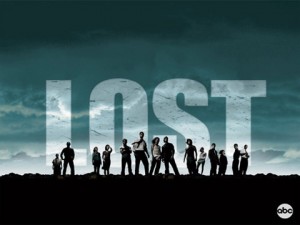When we hear the word “Gothic” our minds fall immediately into a realm of cloudy skies, naked trees, ruinous cathedrals, and demoniac pacts. With a little bit of extension, however, we can easily transfer these motifs while retaining the mood of age and decay. A cloudy sky becomes a clear sky, hostile in its emptiness. The naked trees became palms swaying in a pestilential breeze and the cathedrals are transferred to a whole shadowy region, defined by deserts and oases. And as for demoniac pacts… well, a pact is a pact.
Am I talking about Lost here? Not nearly.
When William Beckford’s History of the Caliph Vathek was first published in 1786 as a British take on Arabian fantasy, it featured all of these elements. There was little dispute over the book’s inclusion with other Gothic works because “orientalism” was already well-established in the genre. In fact, most of the early exemplars were set in Catholic Mediterranean countries where the presumed habit of ritual and the heat of emotion made a nice pretext for such lurid stories. Most of Ann Radcliffe’s works are set in Mediterranean France, and Lewis’ celebrated Monk played out in Spain. We may look to the Geneva of Frankenstein and the Transylvania of Dracula as stereotypical Gothic settings, but from a conventional standpoint, the gamut of Gothic motifs made a more dramatic leap to the Belgian Congo of Conrad’s Heart of Darkness, first published in 1904.
Magnetic antihero? Check.
Sense of oppressive evil? Check.
In fact Conrad’s masterwork satisfies traditional criteria for “Gothic” right down to a tacit but unsettling complicity in maintaining the social status quo. This is important because it illustrates a moment where the Gothic expanded and took on a broader thematic agenda. Thus, while Heart of Darkness is Gothic because it speaks of terror, sublimity, and the supernatural self, these Gothic motifs chosen for Heart of Darkness specifically because the novel is set at the boundaries of comfort: It was written by a European writing about the Belgian Congo.
So what does all of this have to do with Lost?
For starters, we can explore Lost as a Gothic work of art because it meets all of the classic requirements, not by 21st century Goth standards, but in a much earlier, Victorian mold. More importantly, we should care because if Lost is both Gothic and critically acclaimed (it is), then it makes a persuasive argument that the Gothic is just as powerful (and complex) a storytelling mode today as it was a century ago when Conrad published Heart of Darkness, or two centuries ago, when Beckford published Vathek.
STAY TUNED! Next Week, we’ll continue our discussion of Lost, colonialism, the supernatural, and the eternal Gothic (and Gothic Funk).




Pingback: Was Lost Gothic? Do We Care? (Part 2) « Connor Coyne
Pingback: Was Lost Gothic? Do We Care? (Part 4) « Connor Coyne